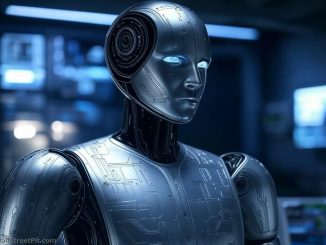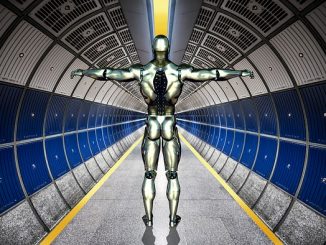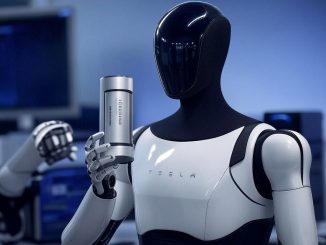
Alright, folks, buckle up because we’re about to dive into a mind-bending comparison that might just redefine how we think about tech giants and market potential.
Cern Basher just dropped a thought bomb on X that’s got everyone talking, and trust me, you’ll want to hear this.
Picture this: Apple, the titan of tech, with its ubiquitous iPhones in the pockets of 1.4 billion people worldwide. Pretty impressive, right? These pocket-sized marvels are raking in a cool $400 billion annually for Apple.
Break it down, and you’re looking at about $285 per active phone each year. Not too shabby, especially when you consider Apple’s astronomical $3.3 trillion market cap/$217 p/sh as of 6/18.
But hold onto your hats, because here comes Tesla, revving up for a plot twist that could make Apple’s numbers look like pocket change.
Imagine a world where Tesla has unleashed an army of 2 billion humanoid robots. No, this isn’t the latest sci-fi blockbuster; it’s Elon Musk’s vision for the future.
Now, let’s do some napkin math that’ll make your head spin. If each of these bots generates a modest $14,000 per year (we’re talking a measly $2 per hour), we’re looking at annual revenue of – wait for it – $28 freaking trillion. That’s trillion with a T, folks.
Let that sink in for a moment. Tesla’s potential revenue would be 70 times larger than Apple’s current annual haul. It’s like comparing a kiddie pool to the Pacific Ocean.
But here’s where Cern’s projections get really wild. If we apply the same revenue-to-market cap ratio that Apple enjoys, Tesla’s market cap could theoretically balloon to a mind-boggling $230 trillion. That’s not just moon-shot territory; we’re talking intergalactic travel.
Now, before we all rush to remortgage our houses and go all-in on Tesla (NASDAQ:TSLA) stock, let’s take a breath.
This is, of course, a thought experiment based on some pretty hefty assumptions. We’re talking about a future where humanoid robots are as common as smartphones are today, and where the regulatory, ethical, and technological hurdles have all been cleared.
But that’s not really the point here. What Basher is illustrating is the sheer, staggering scale of the opportunity that humanoid robotics represents. It’s a reminder that we might be on the cusp of a technological revolution (unavoidable as far as am concerned at this point) that could easily dwarf even the smartphone era in its economic impact.
So, the next time someone scoffs at Elon Musk’s ambitious projections or dismisses the idea of a robot workforce as science fiction, you might want to pull out these numbers.
Because if even a fraction of this potential is realized, we’re looking at a future that’s going to be very different – and potentially much more prosperous – than anything we’ve seen before.
In the tech world, today’s pipe dreams have a funny way of becoming tomorrow’s reality. And if Tesla can turn this robot dream into reality (with Elon at the helm anything is possible), well, let’s just say the term “tech giant” might need a whole new definition.
- Bulenox: Get 45% to 91% OFF ... Use Discount Code: UNO
- Risk Our Money Not Yours | Get 50% to 90% OFF ... Use Discount Code: MMBVBKSM
Disclaimer: This page contains affiliate links. If you choose to make a purchase after clicking a link, we may receive a commission at no additional cost to you. Thank you for your support!





Leave a Reply